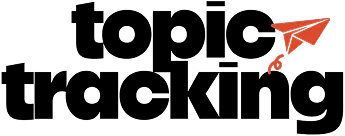The job market is more competitive than ever, with recruiters sifting through hundreds—sometimes thousands—of applications for a single role. Making a lasting impression starts with a well-crafted resume and cover letter. These documents aren’t just summaries of your experience; they’re your first opportunity to showcase your unique value and storytelling skills. Whether you’re switching industries, climbing the career ladder, or re-entering the workforce, understanding modern resume trends and cover letter strategies can help you land interviews faster.
Crafting a Resume That Captures Attention
Your resume needs to make an immediate impact. Hiring managers often spend less than 10 seconds scanning a resume before deciding whether to continue reading. To increase your chances of making it past this initial review, focus on clarity, conciseness, and relevance.
Use an ATS-Friendly Format
Most companies use Applicant Tracking Systems (ATS) to filter resumes before a human ever sees them. To ensure your resume gets through, follow these best practices:
- Use a clean, professional format with standard fonts (Arial, Calibri, or Times New Roman).
- Avoid excessive graphics, images, and unconventional layouts.
- Incorporate relevant keywords from the job description naturally within your resume.
- Use standard section headings such as “Experience,” “Education,” and “Skills” to improve readability for both ATS and human recruiters.
Highlight Your Impact with Results-Driven Bullet Points
Recruiters want to see evidence of your accomplishments, not just a list of responsibilities. Instead of stating what you did, emphasize the results of your work. Use this simple formula: Action + Outcome = Impact.
Example:
-Managed social media accounts.
-Increased social media engagement by 45% in six months by implementing a new content strategy.
Quantifiable achievements demonstrate your effectiveness and make your resume more compelling.
Keep It Concise but Comprehensive
While it may be tempting to include every detail of your career, recruiters appreciate brevity. Stick to one page if you have less than 10 years of experience, and two pages for more seasoned professionals. Ensure every bullet point contributes value and aligns with the job you’re applying for.
Writing a Cover Letter That Tells Your Story
Your cover letter is your chance to introduce yourself beyond the resume. A strong cover letter personalizes your application and helps you connect with hiring managers on a deeper level.
Start with an Engaging Opening
Avoid generic introductions like “I am excited to apply for this position.” Instead, start with a compelling hook that highlights your enthusiasm and qualifications. Consider sharing:
- A brief story about your passion for the industry.
- A connection you have to the company’s mission.
- A key achievement that aligns with the job role.
Example:
“When I first discovered XYZ Company’s innovative approach to sustainability, I knew I wanted to be part of the team. As a marketing strategist with a track record of increasing brand awareness by 200%, I’m eager to bring my expertise to drive impact in your organization.”
Personalize Your Letter for Each Job
Hiring managers can spot a generic cover letter instantly. Tailor each letter by addressing it to the hiring manager (if possible) and referencing the company’s goals. Show that you’ve researched the company by mentioning specific initiatives, values, or challenges they face.
Example:
“I was impressed by your company’s recent commitment to reducing carbon emissions by 30% by 2025. With my background in sustainable supply chain management, I’d love to contribute to achieving this ambitious goal.”
Showcase Your Unique Value
A cover letter should not repeat your resume but rather expand on key experiences that make you a strong fit. Highlight how your background, skills, and personality align with the company’s needs.
Example:
“At my previous company, I led a cross-functional team to implement a digital transformation strategy that reduced operational costs by 20%. I’m excited about the opportunity to bring this strategic mindset to your team.”
Additional Tips for a Standout Application
Keep Your Online Presence Professional
Many recruiters will look beyond your resume and cover letter to evaluate your online presence. Ensure your LinkedIn profile is up to date and aligns with your application. If you have a personal website or portfolio, include the link in your resume.
Proofread and Seek Feedback
Typos and formatting errors can cost you an interview. Use tools like Grammarly or Hemingway Editor to polish your writing. If possible, ask a mentor or colleague to review your application before submitting it.
Follow Up After Applying
A polite follow-up email can reinforce your enthusiasm and keep you on the hiring manager’s radar. If you haven’t heard back within a week or two, send a short message reiterating your interest and inquiring about the hiring timeline.
Stand Out and Get Noticed
A strong resume and cover letter are essential tools in today’s job market, but they are just the first step. By crafting an ATS-friendly resume with quantifiable achievements and a personalized, engaging cover letter, you increase your chances of landing interviews. Stay proactive by refining your online presence, networking with industry professionals, and following up strategically. With the right approach, you’ll set yourself apart and position yourself as the ideal candidate for your dream job.

